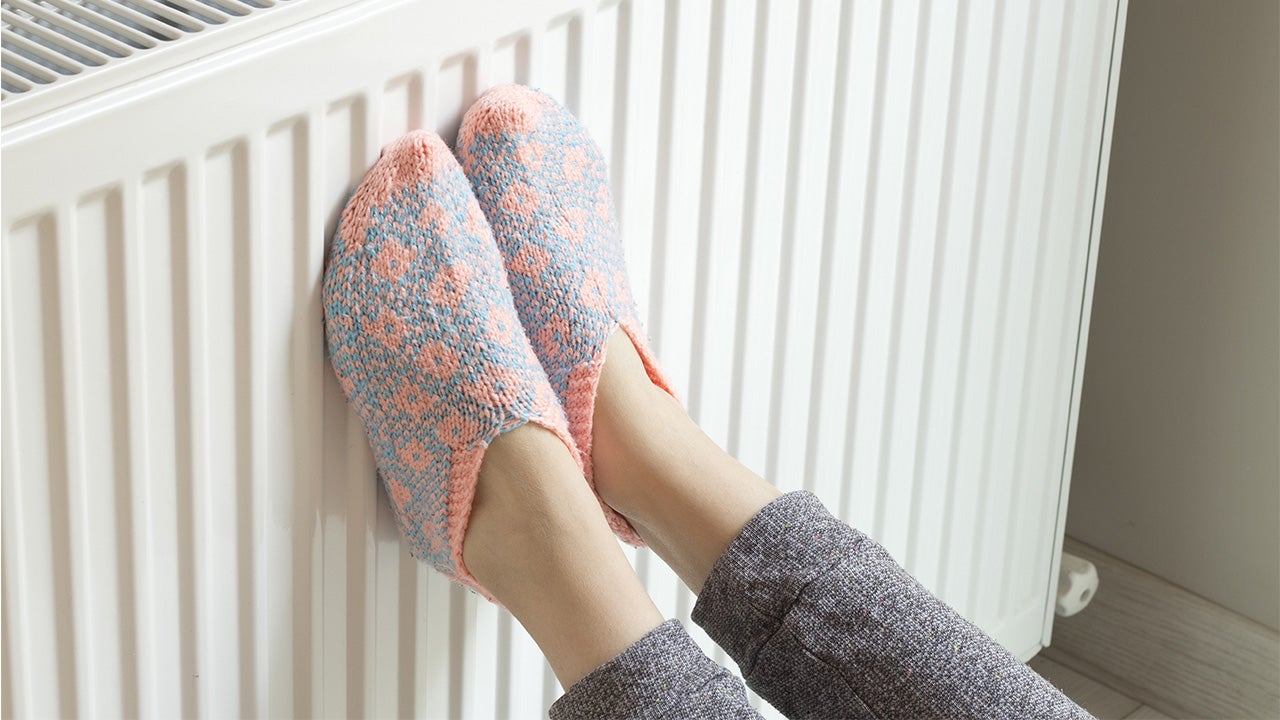How to repair a home radiator

It’s always a drag when your home radiator acts up, and while fixing it isn’t the most costly of repairs ($600 at most, says Fixr.com), waiting for service can be. The good news is, if your radiator is having problems, you might be able to solve them yourself: Many of the most common ills, like leaks, knocking sounds and uneven heating, can be healed even by the inexperienced.
Here’s when (and how) to repair a radiator — and when to call a professional.
How to fix a leaking radiator
If a unit isn’t heating, one of the most common issues is a radiator leak. It’s also one of the easiest issues to diagnose. In most cases, you will find a puddle on the floor below the radiator or a drip from the unit. If you’re unable to find an obvious pooling of water, you can feel around the pipe, bleed valve (a round valve, typically at the top corner) or radiator body for a small pinhole leak. Using a sheet of toilet paper to absorb a tiny leak can help you find moisture on the unit easier. A mirror to look underneath the unit could also be helpful.
The leak may be tiny; in some cases all you may find is a small, dry spot where water once pooled. Once you find the source of the problem, here is how to fix a leaking radiator.
1. Radiator leak at the junction between a pipe and valve
One of the simplest radiator fixes, all you need to do is tighten the connection using a wrench, which should stop the leak.
2. Leak at the control valve
If the control valve appears to be leaking, it could be due to a damaged spindle underneath, which is part of the radiator/pipe connection. Removing the plastic knob of the control valve and tightening the gland nut with a wrench should stop the problem.
3. Leaking valve (lockshield)
Radiators have two main valves to worry about: the aforementioned control valve and a smaller, internal one known as the lockshield valve. If you suspect either as the source of the leak, unscrewing the gland nut and adding thread-seal tape before screwing the nut back on could fix the problem. If it doesn’t, you’ll need to call in a pro: The valve’s inner packing may be worn and in need of replacement. In the meantime, you can shut the valve off using a wrench, such as an adjusting spanner wrench.
4. Leak at the body
If your radiator is leaking from the unit, it is likely that corrosion is the culprit. You may be able to add resin sealant as a temporary fix. But if the radiator is a sealed central heating unit, a compromised body means the radiator itself will need to be replaced.
What other radiator problems can you fix?
Besides a radiator leak, there are a couple of other problems you may be able to fix yourself:
- Gurgling, knocking or other strange noises
- Cold and hot spots
If starting up a radiator causes unusual noises, there may be trapped air that causes the noises and can affect the radiator’s heating efficiency. Uneven temperature that results in a hot lower area and cold upper section is usually another symptom of trapped air that impedes hot water from flowing evenly.
Same problem, same solution: In both cases, bleeding the radiator will likely solve the issue.
How to bleed a radiator
To get rid of noises and trapped air, bleed your radiator in a few steps:
- Turn off the heat and let the radiators cool down.
- Have a radiator key or flathead screwdriver ready to open the valve.
- Place a rag or bowl at the valve location to collect the water.
- Locate the bleed valve, typically at the top corner. It’s a round valve with a square shape inside.
- Unscrew the valve carefully (the water or steam may be hot) and let the valve hiss, releasing trapped air.
- Close the release valve once the hissing stops and water drips out.
When should you not try to fix a radiator?
There are a few scenarios when you should call in a pro.
One is a persistent control valve leak. If the leak continues or returns even after you’ve tightened the nuts, you may need to call a pro to replace the valve or inner compression ring.
Uneven temperature that creates hotspots at the top of the radiator and cold areas at the bottom may mean the unit is blocked with debris or sludge. Hiring a professional to power flush the system is your best bet.
Any other types of radiator repairs which involve replacing internal parts are best left to a professional since improper installation could cause larger problems.
Also, all these fixes apply when it’s just one unit that’s being problematic. “If there are cold radiators throughout the house, you may have a more significant issue with the plumbing or the central heating system itself,” says Ray Brosnan, plumbing expert at Brosnan Property Solutions. “If this is the case, we’d recommend not to attempt to fix the issue yourself as it is potentially dangerous and you may end up damaging the system further.”
You may also like

How to finance a mobile or manufactured home

Which plumbing pipes cost the most money?

Home renovations and repairs: Should you DIY or hire a pro?

How much does it cost to replace your home radiator?


